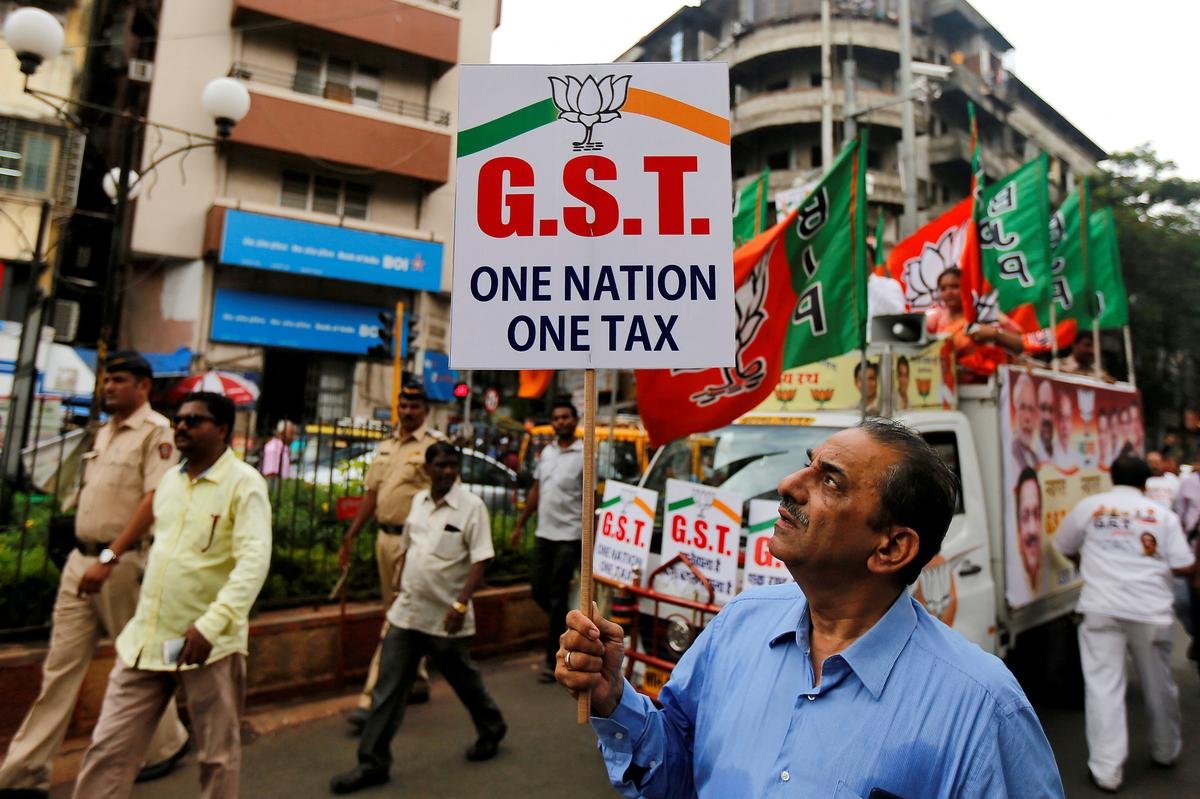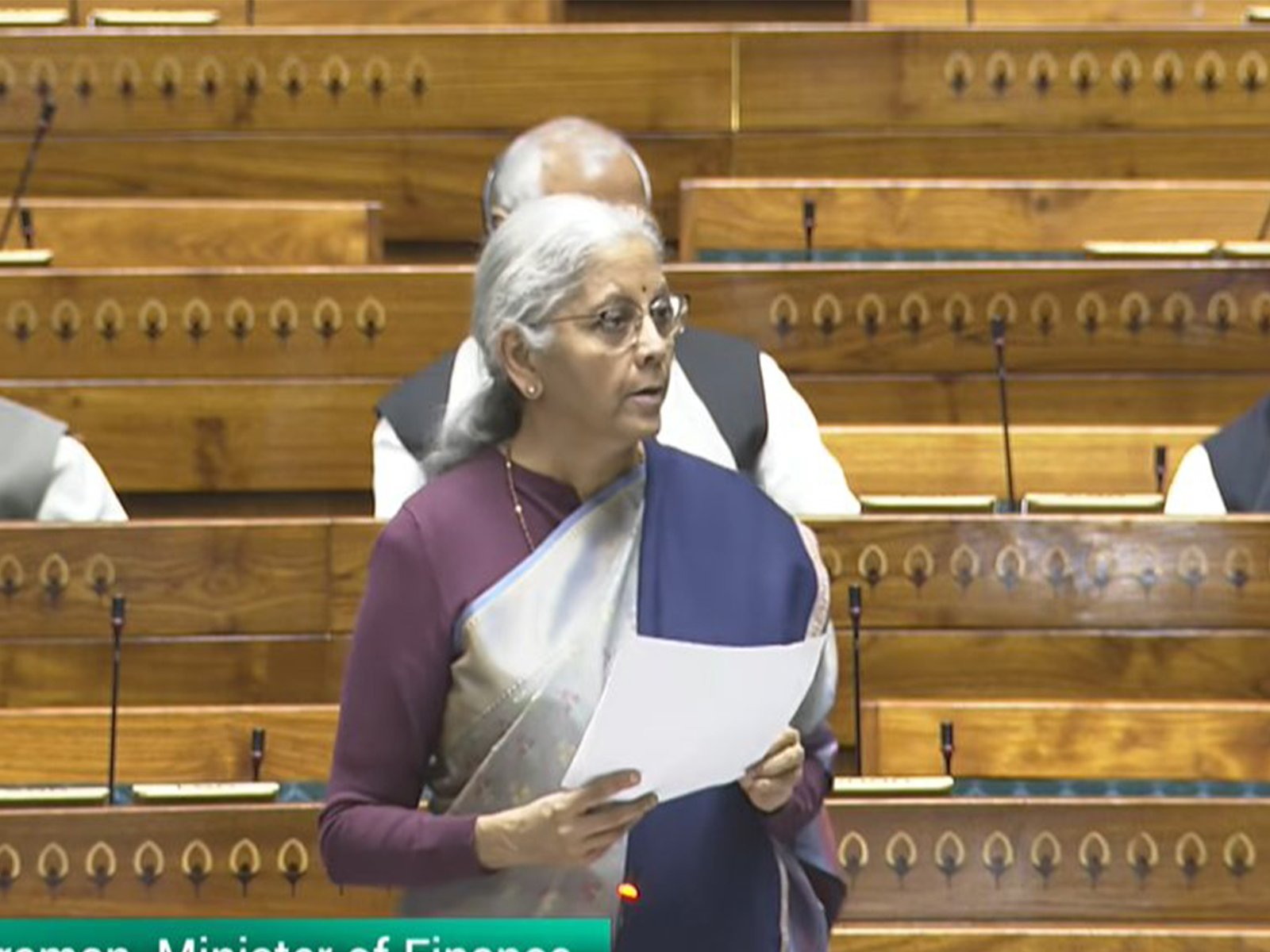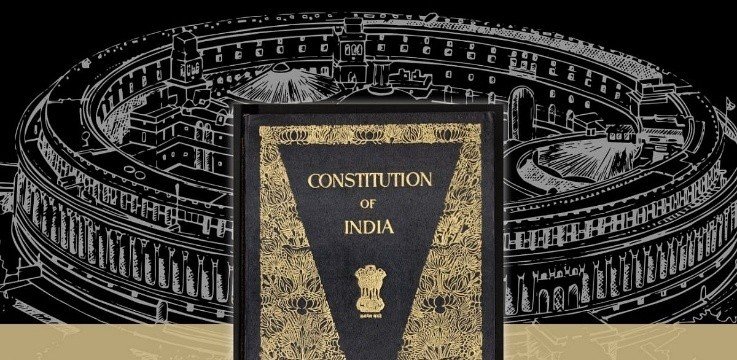Why in the News?
- The abolition of the GST compensation cess and the rising use of cesses and surcharges by the Centre have renewed debates on India’s Centre-State fiscal relations.
- States argue that their fiscal autonomy (freedom to raise and use their own revenue) has reduced, while their expenditure responsibilities continue to grow.
Background: The Changing Fiscal Landscape
- The introduction of the Goods and Services Tax (GST) in 2017 replaced various State taxes such as VAT, entry tax, and purchase tax.
- GST marked a shift from an origin-based tax (collected where goods are produced) to a destination-based tax (collected where goods are consumed).
- It created a common national market, but also centralised taxing power through the GST Council, where the Centre has greater influence.
- States initially received five years of GST compensation to offset revenue losses. This ended in June 2022, leaving States concerned about declining revenue.
Constitutional Provisions on Fiscal Federalism
- Article 246: Divides subjects of taxation between the Union List and State List.
- Article 246A: Inserted through the 101st Constitutional Amendment (2016), empowers both Centre and States to levy GST.
- Articles 268-293: Define Centre-State financial relations.
- Article 280: Provides for the Finance Commission (FC) to recommend tax devolution and grants.
- Article 275: Provides for statutory (mandatory) grants to States.
- Article 282: Allows discretionary grants by the Union for any public purpose.
| Finance Commission: a constitutional body that recommends how central taxes are shared between the Centre and States every five years. |
Fiscal Federalism in Practice
- India follows an asymmetric federal structure, meaning:
- The Centre has greater powers to raise revenue.
- The States bear greater expenditure responsibilities, such as health, education, agriculture, and local governance.
- This imbalance is corrected through tax devolution (sharing of taxes) and grants-in-aid, recommended by the Finance Commission.
Role and Evolution of the Finance Commission
| Finance Commission | States’ Share in Central Taxes |
| 11th FC (2000-05) | 29.5% |
| 12th FC (2005-10) | 30.5% |
| 13th FC (2010-15) | 32% |
| 14th FC (2015-20) | 42% |
| 15th FC (2020-25) | 41% (after J&K became UT) |
- Though devolution percentages have increased, actual transfers are lower because cesses and surcharges are excluded from the divisible pool of taxes.
- These cesses are used for central schemes, giving the Union extra leverage over States.
| Cess/Surcharge: An additional tax imposed for specific purposes, whose proceeds are not shared with States. |
Falling Devolution and Rising Cess Dependence
- Cesses and surcharges now form a significant part of Central revenue —
- ₹3.86 lakh crore (Revised Estimates 2024-25)
- ₹4.23 lakh crore (Budget Estimates 2025-26)
- These funds are outside the shareable pool, effectively reducing States’ share in total revenue.
- This has led to a vertical imbalance (Centre-State gap) and reduced fiscal flexibility for States.
Dependence on Central Transfers
- Central transfers form about 44% of total State revenue on average.
- Bihar: 72% dependent
- Haryana: 20% dependent
- Despite limited revenue powers, States shoulder over 52-53% of total public expenditure.
- This mismatch creates liquidity issues, limits planning, and can lead to political friction, especially for Opposition-ruled States.
Challenges and Way Forward
| Challenges | Way Forward |
| 1. Erosion of Fiscal Autonomy under GST: GST centralised major tax powers in the GST Council, limiting States’ ability to raise their own revenues. | Revisit GST Council framework: to ensure equal voting power and decision-making between Centre and States, strengthening cooperative federalism. |
| 2. Shrinking State Revenues due to Cesses and Surcharges: Cesses and surcharges form a growing share of central taxes but are excluded from the divisible pool, reducing States’ actual share. | Merge cesses and surcharges: into the divisible pool to ensure fair distribution of central tax revenues. |
| 3. Dependence on Central Transfers: States rely on the Centre for ~44% of their revenues, creating liquidity issues and fiscal uncertainty. | Allow States to raise more own-source revenue: e.g., levy a small top-up on Personal Income Tax (PIT) or receive a 50:50 share where PIT is collected. |
| 4. Rising Expenditure Responsibilities: States handle health, education, agriculture, law & order, and local governance, but their revenue powers are not growing proportionally. | Enhance States’ fiscal capacity: through greater tax devolution, flexible grants, and empowering States to design sectoral schemes suited to local needs. |
| 5. Inconsistent Finance Commission Criteria: Different Finance Commissions use varying parameters and weights, sometimes penalising fiscally responsible States. | Reform Finance Commission methodology: make it transparent, stable, and performance-linked to reward efficiency and fiscal prudence. |
| 6. Overcentralisation through Centrally Sponsored Schemes (CSS): Many CSS overlap with State subjects, restricting States’ autonomy in planning and implementation. | Rationalise CSS: limit them to national priorities, while giving States greater freedom to design and implement local programmes. |
| 7. Political and Administrative Friction: Perceived bias or delay in fund allocation to Opposition-ruled States creates mistrust and affects cooperative federalism. | Institutionalise transparent fiscal transfer systems: (e.g., independent fiscal councils) to ensure timely, rule-based, and non-partisan allocations. |
| 8. Design Asymmetry in Fiscal Federalism: Centre controls major taxation sources, while States bear more spending responsibilities, creating a structural imbalance. | Adopt a balanced federal model: (like Canada), where subnational governments collect more taxes and have matching expenditure powers. |
Significance of Restoring Fiscal Space
- Strengthens Cooperative Federalism: Balances Centre-State relations and builds fiscal trust.
- Improves Public Service Delivery: States can respond better to local needs.
- Encourages Fiscal Responsibility: States with efficient tax systems are rewarded.
- Boosts Growth and Equity: Empowered States drive grassroots economic development.
Conclusion
India’s fiscal federalism is at a crossroads. While the GST has improved efficiency and integration, it has also centralised fiscal authority. To maintain the spirit of cooperative federalism, India must revisit its tax-sharing framework, merge cesses with the divisible pool, and enhance States’ fiscal autonomy. Only then can States effectively meet rising developmental and welfare responsibilities.
| Ensure IAS Mains Question Q. “The introduction of GST and rising central cesses have eroded the fiscal autonomy of Indian States.” Analyse the challenges this creates for cooperative federalism in India and suggest policy measures to restore fiscal space for the States. (250 words) |
| Ensure IAS Prelims Question Q. Consider the following statements: 1. Cesses and surcharges form part of the divisible pool of central taxes shared with States. 2. The Finance Commission is constituted under Article 280 of the Constitution. Which of the above statements is/are correct? a) 1 only b) 2 only c) Both 1 and 2 d) Neither 1 nor 2 Answer: b) 2 only Explanation: Statement 1 is incorrect: Cesses and surcharges are not part of the divisible pool of central taxes shared with States. They are collected by the Centre for specific purposes, so States do not receive a share of these revenues. Statement 2 is correct: The Finance Commission is constituted under Article 280 of the Constitution to recommend Centre-State revenue sharing and grants, aiming to address fiscal imbalances and ensure equitable distribution of resources among States. |
| Also Read | |
| UPSC Foundation Course | UPSC Daily Current Affairs |
| UPSC Monthly Magazine | CSAT Foundation Course |
| Free MCQs for UPSC Prelims | UPSC Test Series |
| Best IAS Coaching in Delhi | Our Booklist |





